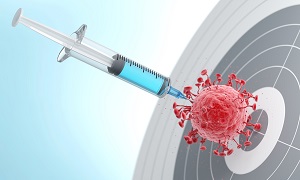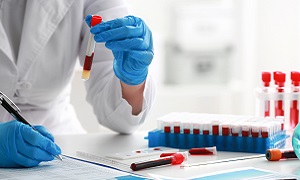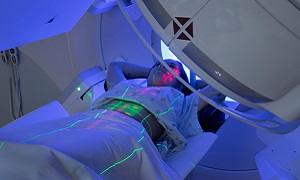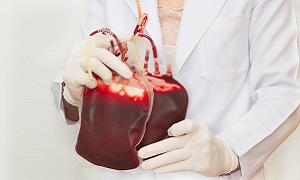What is Acute Lymphoblastic Leukemia (ALL)?
Acute lymphoblastic leukemia (ALL) is a type of cancer that affects the blood and bone marrow, characterized by the rapid proliferation of immature lymphocytes, known as lymphoblasts. It is a subtype of leukemia, which is a broad category of cancers involving the blood and bone marrow. ALL is considered a hematological malignancy and is most common in children but can also occur in adults. Understanding ALL involves examining its pathophysiology, risk factors, symptoms, diagnosis, and treatment options
ALL originates from the malignant transformation of precursor lymphocytes, which are early-stage white blood cells that normally mature into either B cells or T cells. In ALL, these lymphoblasts proliferate uncontrollably, leading to:
- Bone Marrow Infiltration: The accumulation of lymphoblasts in the bone marrow impairs the production of normal blood cells, resulting in anemia, thrombocytopenia (low platelet count), and neutropenia (low white blood cell count).
- Peripheral Blood Involvement: As the disease progresses, these immature cells spill into the bloodstream, leading to elevated lymphoblast counts.
- Organ Involvement: Lymphoblasts can infiltrate other organs, including the lymph nodes, spleen, liver, and, less commonly, the central nervous system (CNS).
Types of Acute Lymphoblastic Leukemia
ALL is classified based on the type of lymphocyte affected and the immunophenotype of the leukemic cells:
B-cell Acute Lymphoblastic Leukemia (B-ALL): The most common type, characterized by the proliferation of immature B lymphocytes. It can be further subdivided into:
- Standard Risk: Cases without specific high-risk features.
- High Risk: Cases with adverse cytogenetic or molecular features, such as Philadelphia chromosome-positive B-ALL.
T-cell Acute Lymphoblastic Leukemia (T-ALL): Involves immature T lymphocytes and often presents with mediastinal mass (tumor in the chest) and lymphadenopathy (swelling of lymph nodes).
Signs & symptoms of Acute Lymphoblastic Leukemia
The symptoms of ALL can vary depending on the extent of disease involvement but commonly include:
- Fatigue and Weakness: Due to anemia from reduced red blood cell production.
- Fever: Often due to infections resulting from neutropenia or as a direct manifestation of leukemia.
- Bleeding and Bruising: Caused by thrombocytopenia, leading to easy bruising, frequent nosebleeds, or gum bleeding.
- Bone Pain: Often experienced in the long bones or joints due to bone marrow infiltration.
- Lymphadenopathy: Swelling of lymph nodes, which may be noticeable in the neck, armpits, or groin.
- Hepatosplenomegaly: Enlarged liver and spleen can cause abdominal fullness or pain.
- Central Nervous System Symptoms: Headaches, seizures, or changes in mental status can occur if the CNS is involved.
Risk factors of Acute Lymphoblastic Leukemia
Several factors can increase the risk of developing ALL:
- Genetic Factors: Genetic abnormalities, such as the Philadelphia chromosome (BCR-ABL fusion gene) or other chromosomal translocations, can predispose individuals to ALL.
- Age: ALL is most common in children, particularly between ages 2 and 5, but it can also occur in adults.
- Gender: ALL is slightly more common in males than females.
- Family History: A family history of leukemia or other hematologic malignancies can increase the risk.
- Genetic Syndromes: Certain inherited conditions, such as Down syndrome and Li-Fraumeni syndrome, are associated with a higher risk of ALL.
- Previous Cancer Treatment: Individuals who have undergone previous chemotherapy or radiation therapy are at increased risk.
Diagnosis of Acute Lymphoblastic Leukemia
The following diagnostic tests are done Acute Lympholastic Leukemia:
Blood Tests
Bone Marrow Test
Imaging Tests
PET Scan
Treatment of Acute Lymphoblastic Leukemia
The treatment for acute lymphoblastic leukemia involves the following:
Chemotherapy

Chemotherapy is the use of anti-cancer drug that helps to slow or stop the growth of rapidly dividing cells that cause cancer. It prevents the growth of rapidly dividing cells by killing the dividing cells.
Despite its side effects, chemo is still the most widely used cancer treatment option. Unlike radiation and surgery which treats cancer cells at particular locations, chemotherapy drugs can kill cancer cells that have metastated (spread) to different organs in the body.
Targeted Drug Therapy

Targeted Drug Therapy is a type of cancer treatment that uses cancer drugs. However, it is different from traditional chemotherapy, which also uses drugs to kill cancer cells. In Targeted therapy, the cancer’s specific genes, proteins, or the tissue environment that contributes to cancer growth and survival are targeted. Targeted therapy is generally used with chemotherapy and other interventions.
Radiation Therapy
Radiation Therapy is a kind of cancer treatment that uses high doses of radiation beams to kill cancer cells to shrink the tumors. Radiation kills the cancer cells by destroying the DNA. Cancer cells with damaged DNA fail to multiply and die. They are then removed by the body’s mechanism.
Bone Marrow Transplant
A Bone Marrow Transplant, also called Stem Cell Transplant is a medical procedure recommendedin case of bone marrow damage. The main aim of the medical procedure is to replace a part of the bone marrow that has been destroyed due to some disease, infection, or due to chemotherapy. The replacement of the blood stem cells promotes the growth of new blood cells and tissues around the bone marrow which in turn promotes prompt recovery of the damaged area. This is primarily why this procedure is also known as the Stem Cell Transplant.
Complications of Acute Lymphoblastic Leukemia
Complications of ALL and its treatment can include:
- Relapse: Return of leukemia after initial treatment.
- Secondary Cancers: Increased risk of developing other cancers as a long-term effect of treatment.
- Organ Damage: Potential damage to organs such as the heart, liver, or kidneys from chemotherapy or radiation therapy.
- Neurocognitive Effects: Cognitive or developmental delays in children due to CNS involvement or treatment.




